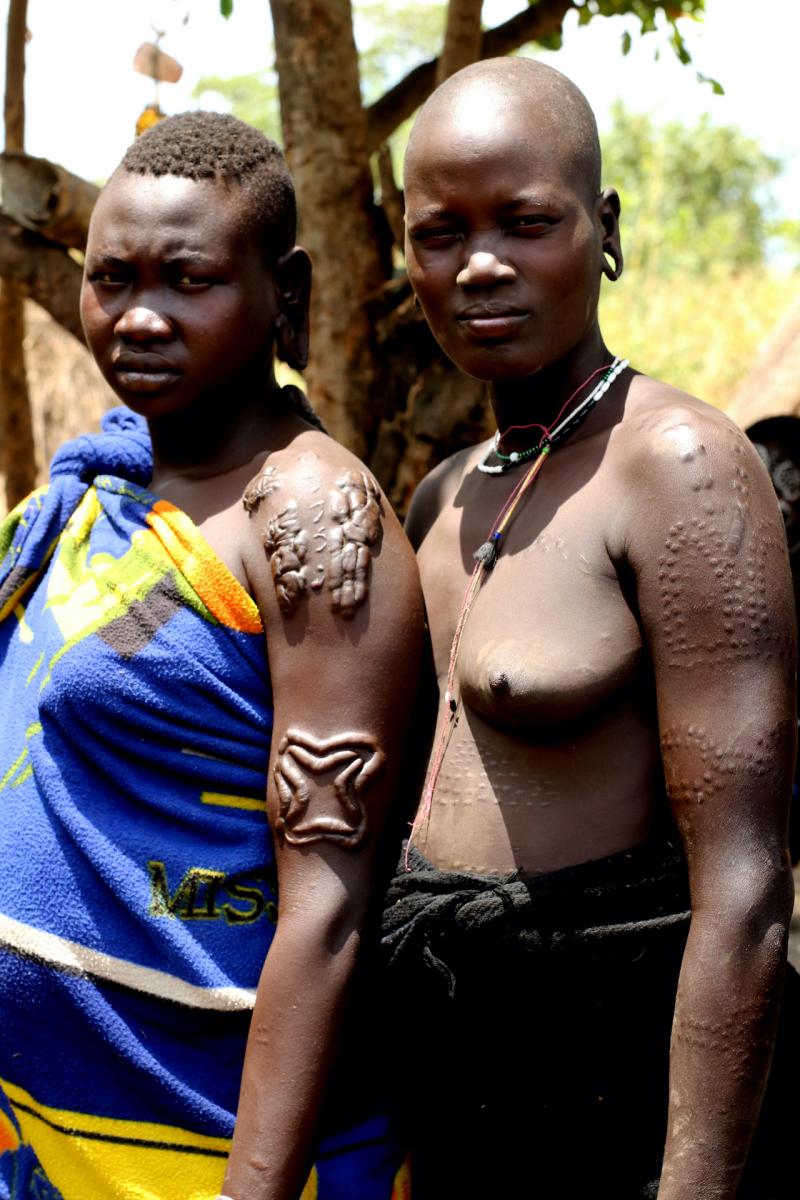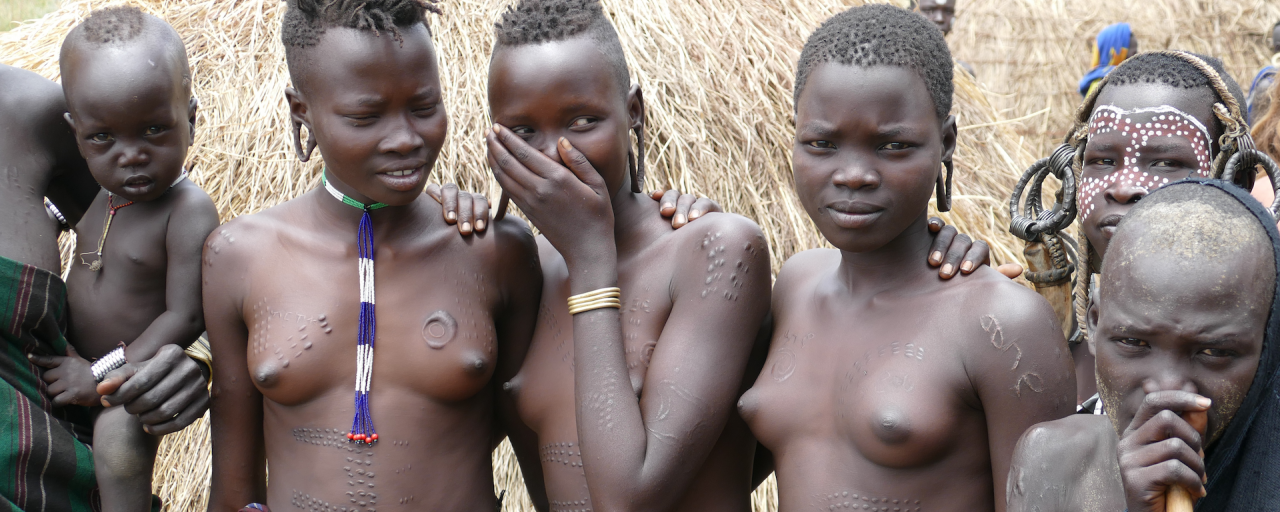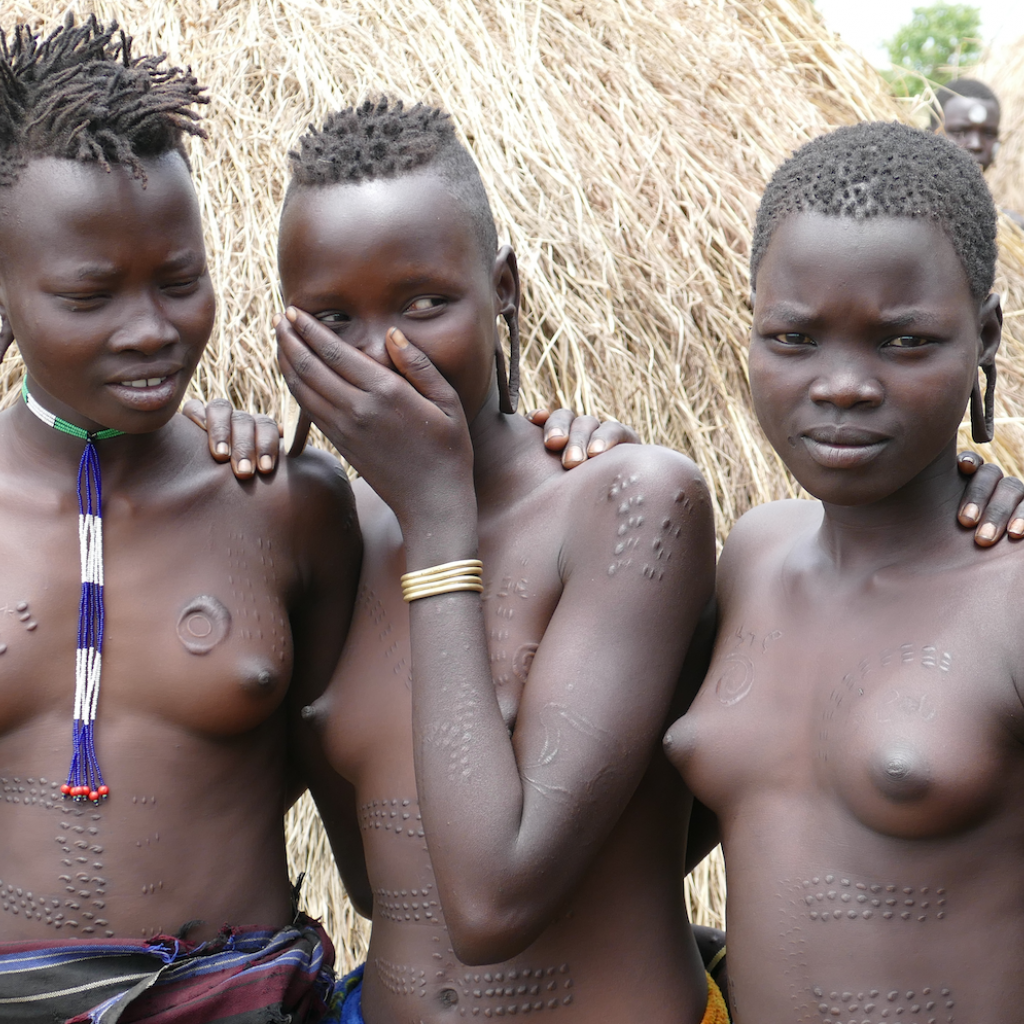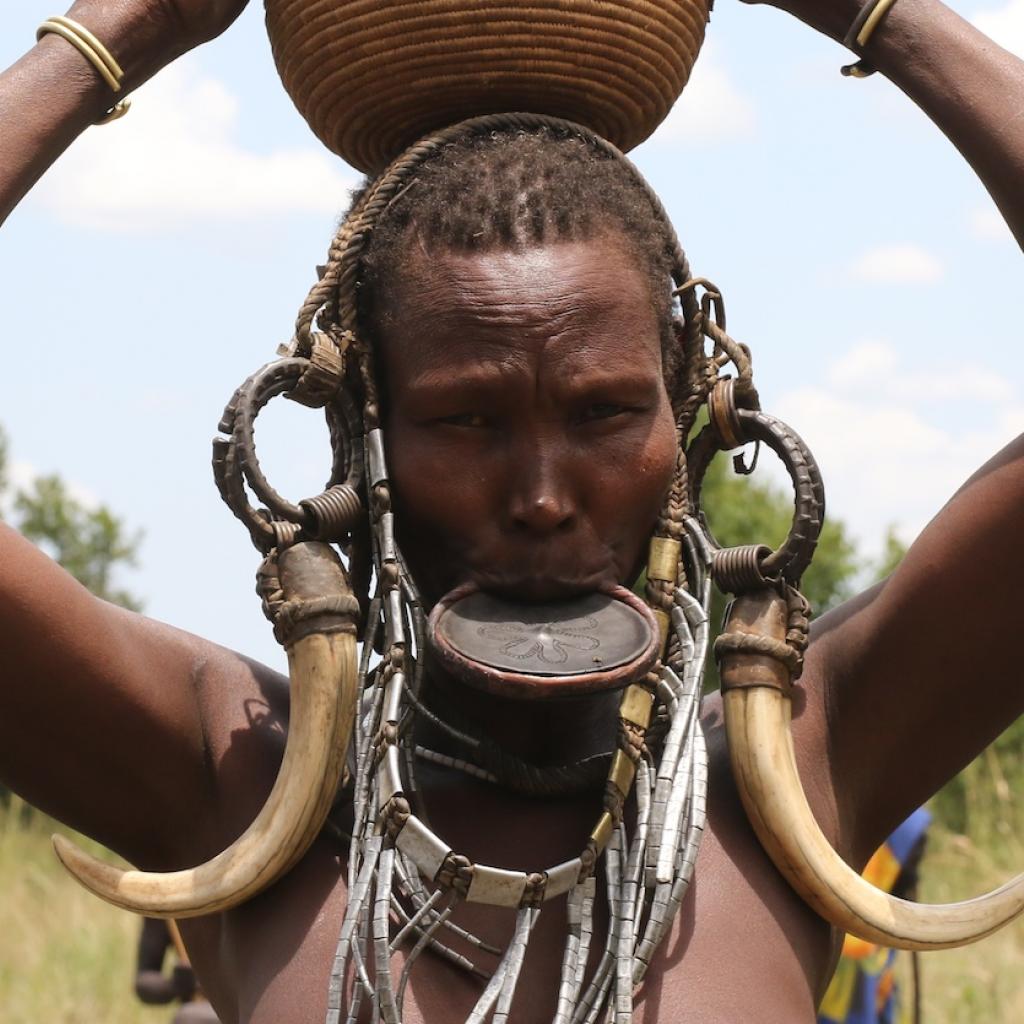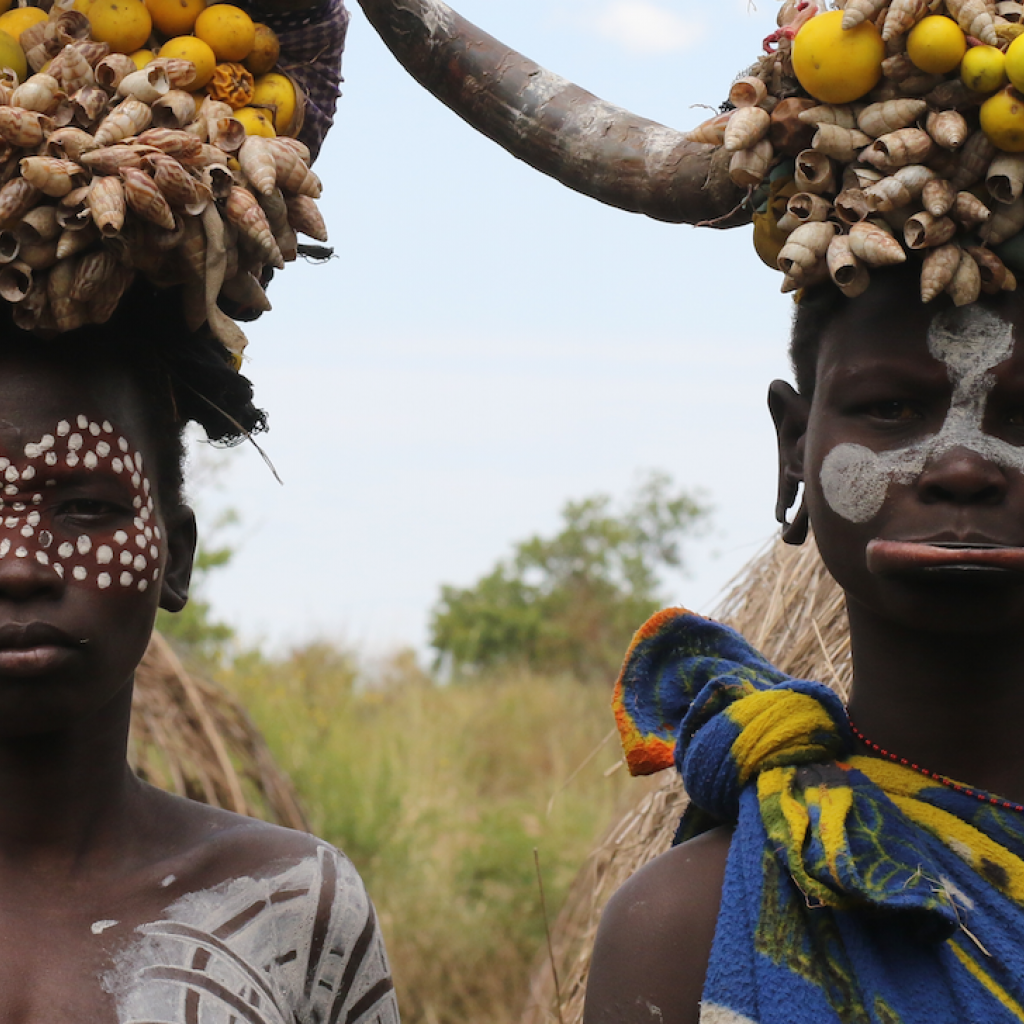The Mursi, as well as other populations of the Omo Valley in Ethiopia, are used to scarification.
There are two types of scarifications with different designs that have different purposes and meanings, some of these scarifications are made for both men and women, while others are reserved for men.
In the tribal culture of the Mursi there are two types of scarification: kitchoga or kitchoa and riru; these two different typologies are characterized by different designs and techniques and have different purposes and meanings, just as the subjects who may have them are different, riru for example is reserved only for men.
The kitchoga or kitchoa scarifications are carried out with a simple but painful procedure: the skin is slightly lifted, using a curved spine, and a cut is made with a sharp blade like that of a razor or a very sharp knife; when the wounds of these incisions heal, keloid scars remain on the skin, that is, raised marks harder than the rest of the individual's skin, that form patterns.
Kitchoga or kitchoa scarifications are made for both men and women and are usually engraved on the upper body, such as the arms, torso, stomach, breasts and back.
Women carve their bodies to get ornamental scars on the abdomen, chest, back and arms; this female practice begins at the age of puberty, when the appearance of the breast begins, and ends when the girl gives birth to her first child.
Men also scarify their skin with these scarifications but, in addition to being a pure aesthetic factor, they do it as a sign of strength and courage; men, unlike women, can continue to scarify even after the birth of their first child.
The designs that are made with the kitchoa technique are different and can be parallel lines, concentric circles, especially around the nipple, up to more elaborate decorations that cover a large part of the body.
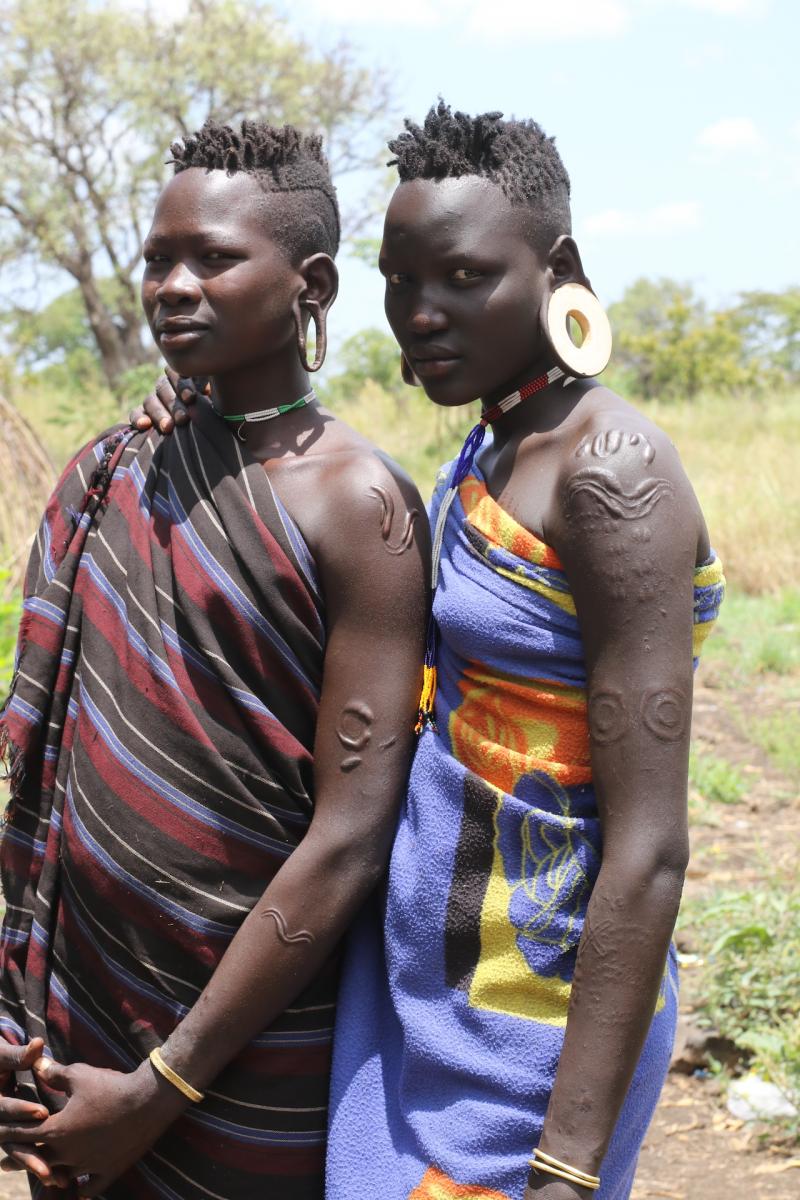
Riru scarifications are carried out with a different and much more painful procedure: with the tip of an incandescent spear one or more U-shaped designs, usually upside down, are carved into the skin.
This type of scarification is reserved exclusively for men and is carried out on the arm; but not all men can have this scarification, only those who have killed an enemy can have it.
The shape of the riru scarification and its method of realization are very reminiscent of the miren drawings that are made on cattle, that are engraved with a pointed and incandescent iron; several scholars argue that there is a parallelism between these two Mursi practices.
The use of fire and heat, as a tool to achieve body transformation, seems to connect the favourite ox to the man; furthermore, the U-shaped design, engraved on the animal and on the man's arm, is very similar and in both there is the number 4, four is the number reserved for men and four double U's are marked on the ox.
A curiosity: the U-shaped decoration is often also done on an object that is an important symbol for the Mursi men: the AK-47 rifle; on the handles of Kalashnikovs decorations with the double U are often engraved, such as those that are marked on animals and on men's arms.
The practice of scarification is still widespread among the Mursi, it is quite common to see the signs and drawings on their bodies, both of women and men; many argue that some, especially younger women, practice scarification to be photographed by tourists, but it is difficult to ascertain whether this statement is true or if they simply remained faithful to their tribal culture, as is the case of the practice of the lip plate.
